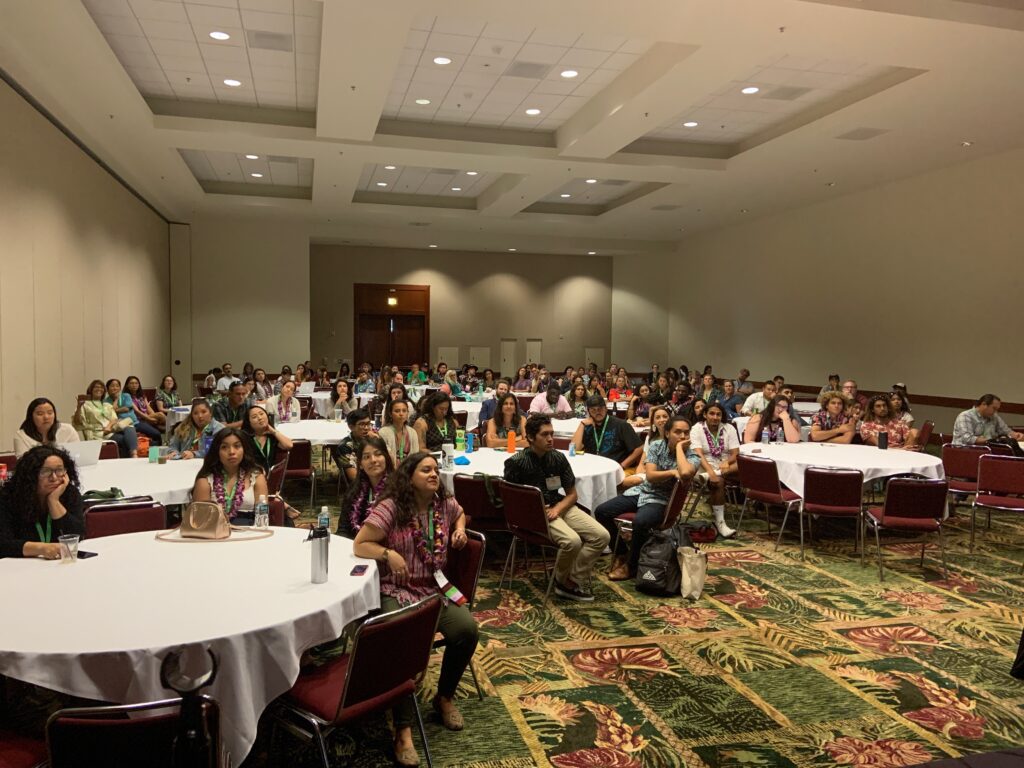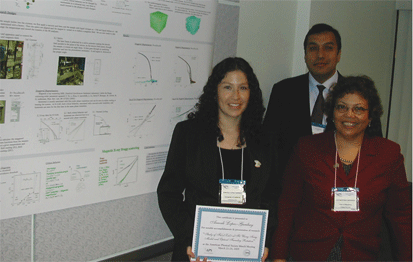Meetings and Events
Three questions may have already occurred to you by now – Why should you go to a meeting? To which meeting should you go? What is expected of you at a meeting?
The Role of Meetings
Physics, like all of the sciences, is a very social process. We meet, we talk and argue, and we tell very nerdy physics jokes and stories. We come together to shop for ideas, discuss our results, listen to critiques, share our thoughts, touch bases with friends and colleagues.
Going to meetings is a natural part of being a physicist. Therefore, learning to give a talk, taking part in a discussion, and interacting with colleagues you just met — are all part of the education of a scientist, a way of establishing your credentials as being part of the community.
And though you will learn much by attending papers and posters on topics of interest … you will learn much more from conversations and discussions with people who share common interests but who bring a very different perspective. E-mail, Zoom, and phone calls are a poor substitute for face-to-face conversation. And many fruitful friendships and collaborations begin at meetings.
Hopefully, by now you have decided that a meeting might be worth exploring — but which meeting?

The Choice of Meetings
Rather than try and carve out our own space among the many physics meetings each year, the NSHP holds Joint Meetings with a few selected societies. Each of our partners offers us (and you) a different environment, different opportunities, different vibrations.
SACNAS
The Society for the Advancement of Chicanos and Native Americans in Science (https://www.sacnas.org/) is one of the oldest and most dynamic societies devoted to minority students and faculty. Certainly it boasts one of the largest gathering of students at any national meeting.
Though posters on teaching pedagogy and educational initiatives are beginning to make an appearance at this meeting, it remains primarily a place for minority students and faculty to present their research. The SACNAS meeting is unique in that as well as being a scientific meeting, it is also a celebration of culture. The NSHP holds a Joint Meeting with SACNAS in the fall but physics remains a small but growing part of the papers at the meeting.
The NSHP has a small NSF grant to recognize and award the best physics student poster at the meeting.

NSBP
The National Society of Black Physicists (https://www.nsbp.org/) is older and more established than the NSHP but it shares a similar mission and objectives for African-American physicists. Their meetings began primarily for the physicists in industry and government laboratories but they have continued to grow and now offer a wealth of opportunities for both students and faculty. Indeed, students will find a comprehensive set of sessions devoted to studying at the undergraduate and graduate levels, preparing for the GRE, presenting talks, writing resumes, finding jobs, and many other relevant subjects. Students and faculty are able to present their research and attend plenary talks on frontier research in physics.
Visit YouTube and hear what students had to say about being at the 2004 Joint NSBP/NSHP Meeting in Orlando.
You can also read about the 2008 Joint meeting.
- Confused at a Higher Level, blog by Arejendu K. Pattanayak, Associate Professor at Carleton College
or the 2015 conference by an SPS reporter
AAPT
The American Association of Physics Teachers (https://www.aapt.org/) is the organization with the cleanest and greatest focus on the teaching and learning of physics at all levels (K-20). Though NSHP has had two Joint Meetings with AAPT (Austin — Winter 2003 and Albuquerque — Winter 2005) due to geographical reasons no other Joint Meetings are scheduled at this time. However, AAPT meetings have much to offer Hispanic students and faculty who are particularly interested in how to more effectively teach physics. In addition, those teachers and faculty wanting to learn how to more effectively engage under-represented groups in physics, indeed how to more effectively engage all students in physics, can learn much by visiting AAPT meetings. The Physics Education Research community has recently been holding a day long conference at the conclusion of the AAPT summer meeting.
APS
The American Physical Society (https://www.aps.org/) is the largest society of research-based physicists in the United States. Though its focus has traditionally been on the research development of the physics community it has started to develop an impressive presence in the fields of physics educational research and teaching physics at the university level. Though we (the NSHP) have not held any Joint Meetings with APS at the national level we have met with sectional APS chapters, primarily the Texas section (TSAPS) and the Southeast section(SESAPS).
What is Professional Conduct?
A member of the scientific community is expected to follow high standards of professional behavior, particularly at professional meetings.
But what is professional behavior? Many advisors do not have a comprehensive discussion of these standards of behavior and even fewer describe explicitly the roots of this behavior in the values that we hold in common.
Meeting attendees are expected to study and then adhere to the NSHP Code of Conduct while at professional meetings.
Complicating matters is that the NSHP meetings are usually joint meetings with another society. These other societies will also have their own expected Code of Conduct. Typically this means that meeting attendees will need to comply with two codes. The registration procedure normally identifies any divergence of expectations, such as the reporting procedure of infractions.
